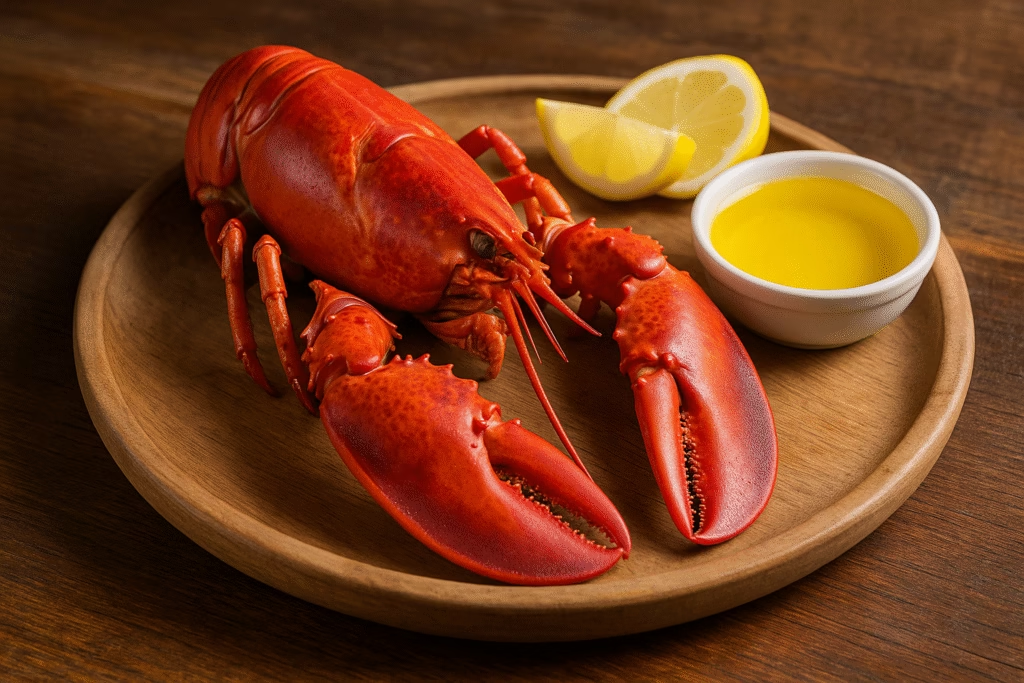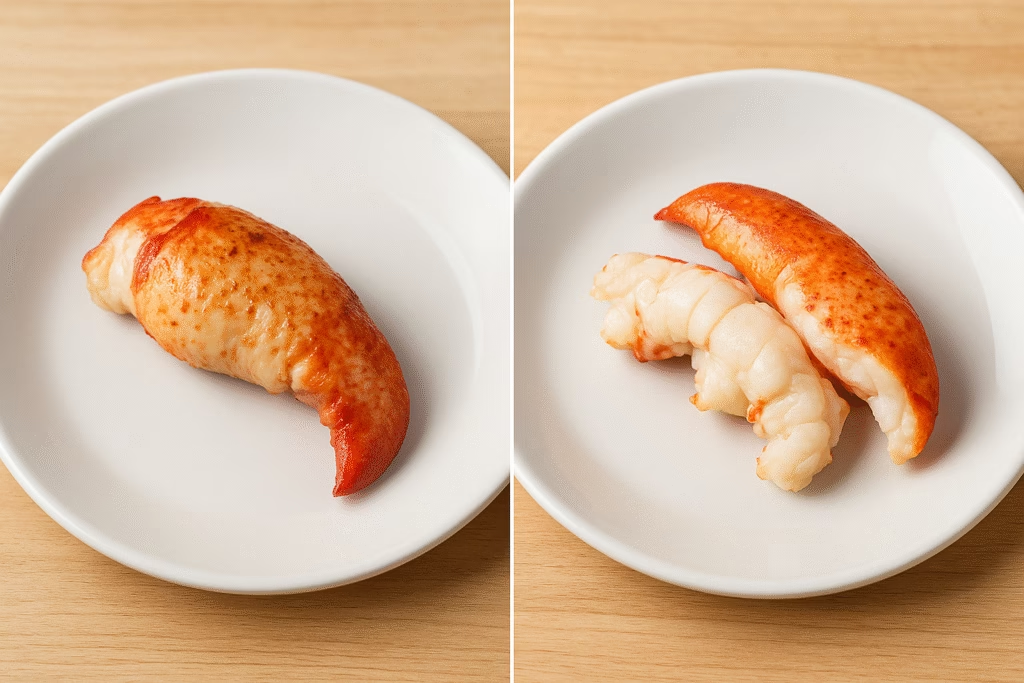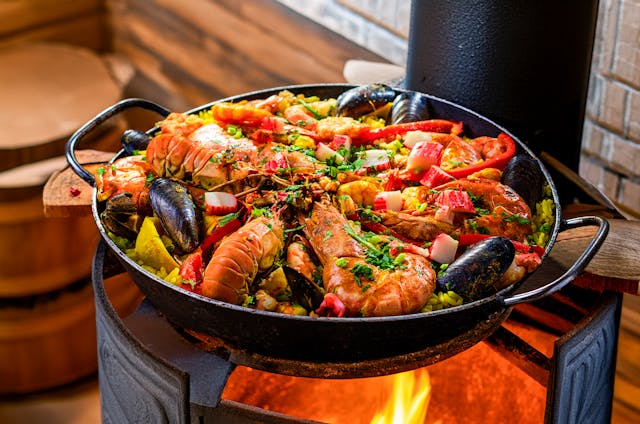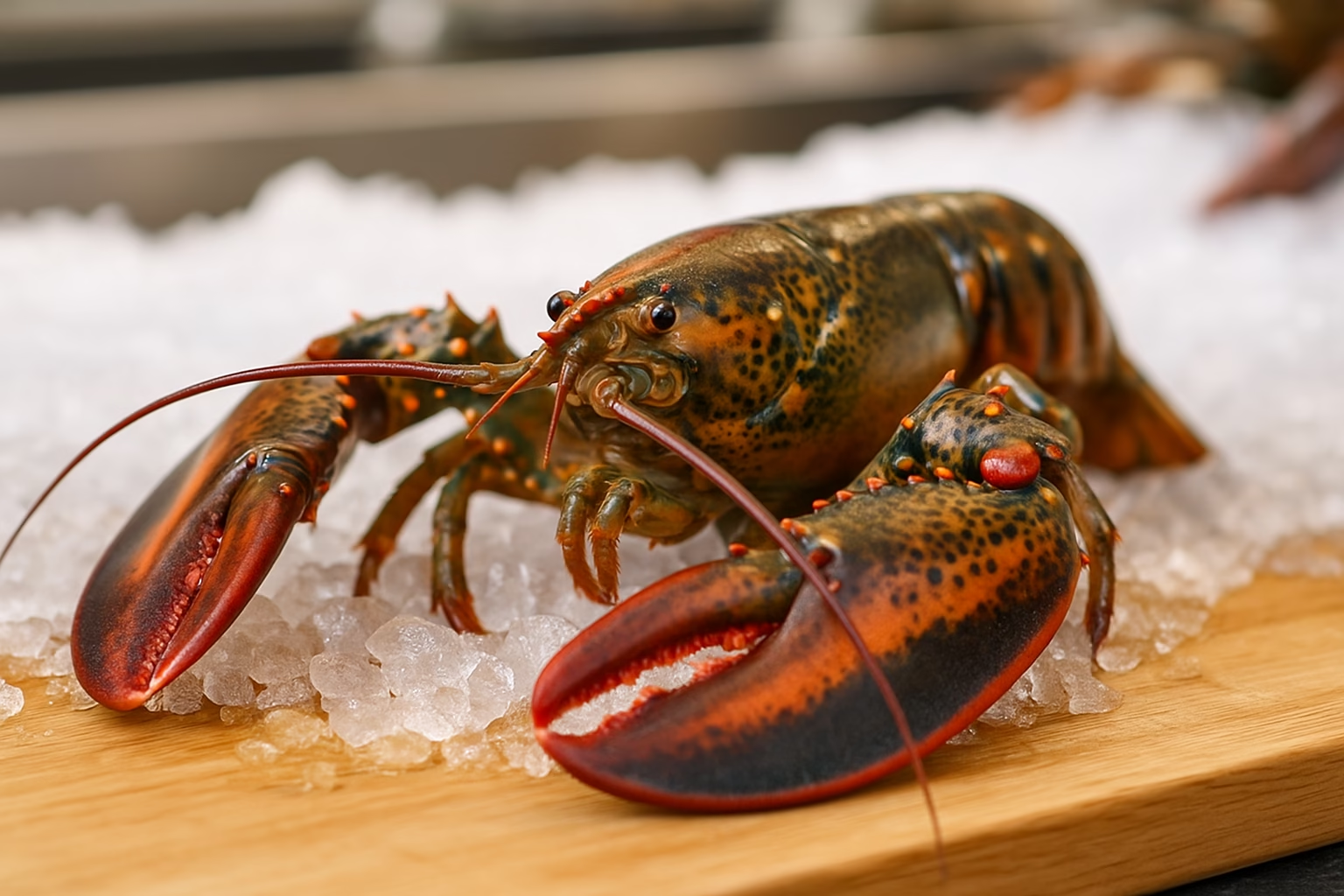Introduction to How to Cook a Lobster
Learning how to cook a lobster can feel intimidating at first, but with the right approach, it’s simpler than you might expect. Whether you’re preparing a special dinner, a summer seafood feast, or experimenting with new recipes, mastering lobster cooking ensures tender, flavorful meat every time. The process primarily involves choosing between boiling, steaming, or grilling, each method offering unique textures and flavors. By understanding cooking times, preparation steps, and serving tips, you’ll gain confidence in handling lobster at home.
Freshness is key when learning how to cook a lobster. Live lobsters are best, as they guarantee the highest quality of meat. You’ll also need to understand how to humanely handle and prepare them. Proper timing is crucial too, since overcooking results in tough, chewy lobster instead of the juicy, delicate texture you want. Once you’ve mastered the basics, you can pair lobster with classic accompaniments like melted butter, lemon wedges, or even pasta and risotto. This guide will break down everything you need to know about how to cook a lobster step by step.
Choosing the Right Lobster
Before diving into the details of how to cook a lobster, it’s essential to know how to select the right one. The quality of your dish starts with the freshness and type of lobster you choose. A live lobster is always the best option because it ensures firm, sweet meat with maximum flavor. When shopping, look for lobsters that are lively, active, and responsive when handled. A sluggish lobster may already be weak or nearing the end of its shelf life, which can negatively affect taste and texture.
There are two main types of lobsters commonly found in markets: hard-shell and soft-shell. Hard-shell lobsters, also called “true lobsters,” have firmer shells and more meat. They are often slightly more expensive but provide a better yield. Soft-shell lobsters, also known as “shedders,” have recently molted and therefore have tender meat but less overall volume. If you want the richest, most satisfying results when you learn how to cook a lobster, hard-shell is usually the better choice. However, soft-shell lobsters can be easier to crack and may appeal to beginners.
Size is another key factor. While giant lobsters might seem impressive, smaller lobsters, typically weighing between 1¼ to 1½ pounds, are often the sweetest and most tender. These cook evenly and are easier to manage whether you boil, steam, or grill. Larger lobsters, while meaty, can sometimes be tougher and require more careful cooking to avoid a rubbery texture. For anyone just starting to practice how to cook a lobster, smaller specimens are more forgiving.
Also pay attention to the source of your lobster. Wild-caught Maine lobsters are considered the gold standard due to their cold-water habitat, which produces flavorful, firm meat. Whenever possible, buy from reputable seafood markets or suppliers that store lobsters in clean, well-maintained tanks. This helps ensure that the lobster you bring home is healthy and safe to cook. Understanding these details before you even step into the kitchen will make the process of learning how to cook a lobster much smoother and more rewarding.
Preparing Lobster Before Cooking
Once you’ve selected the perfect lobster, the next step in learning how to cook a lobster is proper preparation. Handling lobster the right way ensures not only a better taste but also a more humane cooking process. Start by keeping your lobster alive and fresh until you’re ready to cook. Store it in the refrigerator in a breathable paper bag or damp cloth, never submerged in fresh water, as this will kill it prematurely. Lobsters thrive in cold environments, so refrigeration slows them down without harming them until cooking time arrives.
One of the most important considerations when preparing a lobster is handling it humanely. The most widely recommended method is to place the lobster in the freezer for 15 to 20 minutes before cooking. This numbs the lobster and minimizes stress. Once numbed, you can place it directly into boiling water or steam. Some chefs also prefer splitting the lobster quickly with a sharp knife for grilling. Whichever technique you choose, preparation is critical in learning how to cook a lobster properly and ethically.
Cleaning the lobster is also a part of the preparation process, though it typically comes after cooking. Before cooking, the main concern is ensuring the lobster is alive and healthy. However, if you plan to grill or broil, you may want to parboil the lobster briefly to make handling easier and to keep the meat from sticking to the shell. This step gives you more control, especially if you’re new to understanding how to cook a lobster in different styles.
Gathering the right equipment beforehand makes preparation smoother. You’ll need a large pot if boiling or steaming, tongs for handling the lobster, and sharp kitchen shears or a chef’s knife for cutting shells after cooking. If grilling, a sturdy grill rack helps keep the lobster in place. Having melted butter, lemon wedges, or seasonings ready in advance ensures you can serve your dish immediately, while it’s at its most flavorful. Proper preparation is a crucial step on your journey to mastering how to cook a lobster with confidence and success.
How to Cook a Lobster: Boiling Method
Boiling is one of the most traditional and straightforward ways to learn how to cook a lobster. It’s favored by many home cooks and restaurants alike because it delivers tender, juicy meat while also making it easy to extract from the shell. To get started, fill a large stockpot with enough salted water to completely submerge the lobsters. The general rule is about two tablespoons of salt per quart of water, which helps replicate the natural ocean environment and enhances flavor. Bring the water to a rolling boil before adding the lobsters, ensuring they cook evenly and quickly.
When placing the lobster into the pot, hold it firmly by the back and lower it headfirst into the boiling water. This method is both efficient and considered humane when the lobster has already been chilled in the freezer for 15 minutes. Cover the pot immediately to maintain a consistent temperature. Cooking times are determined by the size of the lobster: a 1¼-pound lobster usually requires 7–8 minutes, while a 2-pound lobster may need up to 12–14 minutes. Overcooking is the most common mistake when people learn how to cook a lobster, as it leads to rubbery, dry meat. Always monitor the time carefully.
One useful tip is to look for the lobster’s shell color change. As it cooks, the shell turns from a dark bluish-green to a bright red. The antenna or small legs can also be tugged to check for doneness—if they come off easily, the lobster is fully cooked. Once finished, use tongs to carefully remove the lobster from the pot and immediately place it on a platter to rest. Allowing the lobster to cool slightly makes it easier to handle when cracking the shell and extracting the meat.
The boiling method is ideal for larger gatherings since multiple lobsters can be cooked at once in a large pot. It’s also versatile, as you can boil lobsters ahead of time, then chill them for use in salads, rolls, or pasta dishes. Whether you plan to enjoy your lobster dipped in butter or incorporated into a recipe, boiling is an excellent foundation for anyone eager to master how to cook a lobster successfully.
How to Cook a Lobster: Steaming Method
Steaming is another popular and highly recommended way to learn how to cook a lobster. Unlike boiling, which submerges the lobster fully in water, steaming allows the lobster to cook gently in moist heat. This method is praised because it helps preserve the natural flavor and texture of the lobster meat while preventing it from becoming waterlogged. To begin, fill the bottom of a large pot with two inches of salted water or seawater and place a steaming rack or basket inside. Bring the water to a rapid boil before adding your lobsters to ensure consistent cooking.
When you place the lobster on the steaming rack, make sure the lid fits tightly to trap the steam inside. Timing is crucial—generally, a 1¼-pound lobster requires about 9–10 minutes, while a 2-pound lobster may take 15–18 minutes. Steaming takes slightly longer than boiling, but many chefs believe the results are superior, as the meat stays firmer and more flavorful. Learning how to cook a lobster through steaming is especially ideal if you want to serve it whole with drawn butter and lemon since the presentation remains beautiful and intact.
One advantage of the steaming method is that it reduces the chance of overcooking. Because the lobsters aren’t sitting in boiling water, they don’t cook as aggressively. Still, you should watch for the same visual cues: the shell will turn bright red, and the meat should be opaque and firm. To confirm doneness, pull on a small leg or check the internal temperature with a food thermometer, which should read 140–145°F. These small checks are an essential part of mastering how to cook a lobster with confidence.
Steamed lobster pairs wonderfully with garlic butter, fresh herbs, or light sides like corn and salad. Since the lobster retains more of its natural juices, it is often more flavorful than boiled versions. Another benefit is that the steaming water can be enhanced with aromatics such as bay leaves, white wine, or garlic, subtly infusing the lobster with extra flavor. Whether you’re preparing an elegant dinner or a casual meal, steaming is a refined technique that helps elevate your understanding of how to cook a lobster perfectly at home.

How to Cook a Lobster: Grilling Method
For those who love smoky flavors and a touch of char, grilling is an exciting way to learn how to cook a lobster. Unlike boiling or steaming, grilling gives lobster meat a unique depth of flavor while adding an attractive sear. To prepare, it’s best to parboil or steam the lobster for a few minutes first. This partially cooks the meat and makes it easier to handle on the grill. After this quick pre-cook, split the lobster lengthwise with a sharp knife. This exposes the meat, allowing it to absorb smoky aromas and cook evenly over the flames.
When setting up the grill, aim for medium-high heat and lightly oil the grates to prevent sticking. Place the lobsters shell-side down first, which protects the delicate meat while allowing the shell to act as a natural cooking vessel. Baste the meat with melted butter, garlic, or a marinade of your choice to enhance flavor and keep it moist. Cooking times for grilled lobster are shorter than you might think: around 5–6 minutes for the meat side, depending on size. The goal is to achieve opaque, firm meat without overcooking. Keeping an eye on the timing is vital in mastering how to cook a lobster on the grill.
Grilled lobster is incredibly versatile when it comes to serving. It can be enjoyed simply with lemon wedges and butter or incorporated into dishes like lobster tacos, salads, or pasta. The smoky undertone from the grill pairs beautifully with fresh herbs, citrus, and even spicy seasonings for those who like bold flavors. This flexibility is one reason many seafood lovers experiment with grilling as they advance their knowledge of how to cook a lobster in different ways.
Another tip for success is to cover the grill while cooking. This traps heat and creates an oven-like environment, ensuring the lobster cooks through evenly. Be mindful, though, not to leave the lobster unattended—flames can flare and burn the meat quickly. With a little practice, grilling becomes a fun and rewarding method, especially during summer cookouts. For anyone eager to elevate their seafood game, grilling is a flavorful, crowd-pleasing option in the journey of learning how to cook a lobster.
Step-by-Step Guide on How to Cook a Lobster
Step 1: Preparing the Lobster
The first step in mastering how to cook a lobster is preparation, and it begins well before the lobster meets heat. Once you’ve purchased your lobster, keep it alive and fresh by storing it in the refrigerator in a breathable bag or damp cloth. Avoid placing it in fresh water, which will quickly kill it and compromise the quality of the meat. To handle the lobster humanely, place it in the freezer for 15–20 minutes before cooking. This slows its movements and makes the process less stressful for both the lobster and the cook. Next, gather your tools: a large stockpot for boiling or steaming, sharp kitchen shears, sturdy tongs, a thermometer, and butter for serving. If you’re planning to grill, prepare a sharp knife for splitting the lobster lengthwise. This careful preparation is crucial because it sets the stage for a smoother cooking process. Many beginners underestimate this step, but those who study how to cook a lobster know that preparation can make or break the final dish.
Another part of preparation is considering the meal presentation. Will you be serving whole lobsters on a platter, or cracking the meat out for lobster rolls or pasta? Your intended dish determines whether you parboil before grilling, fully steam, or stick to boiling. Taking time to decide on your method ensures efficiency and confidence once cooking begins. By the end of this stage, you should have a live lobster ready, your cooking equipment in place, and your chosen method clear. This structured approach to step one ensures you’re well on your way to mastering how to cook a lobster properly.
Step 2: Cooking the Lobster
Now that preparation is complete, the next step is the actual cooking process. For boiling, start by bringing a large pot of salted water to a rolling boil. Place the lobster headfirst into the pot, cover it, and monitor the cooking time carefully—7–8 minutes for a 1¼-pound lobster, 12–14 minutes for a 2-pound lobster. If steaming, fill your pot with two inches of salted water, insert a steaming rack, and cover tightly with a lid once the lobster is placed inside. Cooking time will be slightly longer, usually 10 minutes for a smaller lobster and up to 18 minutes for a larger one. For grilling, split the lobster lengthwise, brush with butter or marinade, and place shell-side down on medium-high heat. Grill for 5–6 minutes until the meat is opaque and firm. Regardless of the method, timing is everything. Overcooking is the biggest mistake people make when learning how to cook a lobster, and it can turn sweet, juicy meat into something tough and rubbery.
Visual cues are equally important as timing. The shell should turn bright red, and the meat should lose its translucency, becoming opaque and firm to the touch. If using a thermometer, the internal temperature should reach 140–145°F. Testing by pulling on a small leg or antenna is another classic trick—if it detaches easily, the lobster is done. By keeping a close eye on both the clock and these indicators, you’ll ensure the lobster is cooked perfectly. This step represents the heart of learning how to cook a lobster, and practice will only make you more confident over time.
Step 3: Serving the Lobster
The final step in this guide on how to cook a lobster is serving it properly. Once cooked, remove the lobster carefully from the pot or grill and let it rest for a few minutes. This short cooling period allows the juices to settle, making it easier to crack open. Place the lobster on a cutting board, then use kitchen shears or a lobster cracker to open the shell and extract the meat. Be sure to save the claws, knuckles, and tail meat, as these are the most prized parts. The tomalley (green substance) and roe (if present in females) are edible as well, though they are considered an acquired taste and optional for serving.
For a classic presentation, serve the lobster whole with melted butter and lemon wedges on the side. This setup allows diners to enjoy cracking the shell themselves, which can be a fun, interactive dining experience. Alternatively, remove all the meat ahead of time and serve it in rolls, pasta, risotto, or alongside grilled vegetables. No matter how you plate it, the key is to present the lobster while it’s still warm, as the flavor is at its peak. Mastering this last step completes the cycle of how to cook a lobster, transforming it from a live shellfish into a gourmet dish that impresses family and guests alike.
Common Mistakes When Learning How to Cook a Lobster
Even though the process of how to cook a lobster is straightforward, many home cooks fall into avoidable pitfalls that can ruin the final dish. One of the most frequent mistakes is overcooking. Lobster meat is delicate, and leaving it in boiling water, steam, or on the grill for too long turns the texture tough and rubbery. Timing is critical—always adjust based on the size of the lobster and use visual cues such as shell color and meat opacity. Remember, lobster continues to cook slightly even after it’s removed from heat, so taking it out at the right time is essential.
Another mistake is neglecting to prepare the lobster correctly before cooking. Skipping the step of chilling the lobster in the freezer for 15 minutes can make handling stressful, both for you and the lobster. Similarly, failing to have tools like crackers, shears, or tongs ready creates chaos once the lobster is done. Anyone learning how to cook a lobster should understand that preparation is just as important as the cooking itself.
Using the wrong cooking method for your needs is also a common error. For example, boiling too many lobsters in a small pot lowers the water temperature and results in uneven cooking. On the other hand, trying to grill without parboiling or properly splitting the lobster can leave you with raw sections or burned meat. Choosing the right method and equipment ensures better results and makes the learning process of how to cook a lobster smoother.
Some cooks also forget the importance of seasoning. While lobster has a naturally sweet flavor, boiling in unsalted water or steaming without aromatics can lead to bland results. Always salt your cooking water generously, and consider adding herbs, wine, or garlic for extra depth. Additionally, serving without accompaniments like melted butter or lemon leaves the dish feeling incomplete. A well-cooked lobster deserves thoughtful pairing to highlight its flavor. By avoiding these mistakes—overcooking, poor preparation, improper methods, and lack of seasoning—you’ll gain confidence and skill in mastering how to cook a lobster perfectly every time.

Conclusion: Mastering How to Cook a Lobster
By now, it should be clear that learning how to cook a lobster is a process that combines preparation, timing, and confidence. While it may seem daunting at first glance, once you understand the fundamentals of choosing, preparing, and cooking, the task becomes far less intimidating. Whether you boil, steam, or grill, the key lies in respecting the lobster’s delicate texture and ensuring you don’t overcook it. Freshness is the foundation of flavor, and pairing lobster with simple accompaniments such as melted butter, lemon, or herbs enhances its natural sweetness without overshadowing it.
Practicing the different methods—boiling for simplicity, steaming for flavor retention, or grilling for smoky richness—gives you flexibility in how you approach meals. Each method offers unique strengths, and experimenting helps you decide which works best for your tastes and cooking style. Along the way, you’ll also avoid common mistakes such as under-preparation, improper timing, or lack of seasoning. The more you practice, the more comfortable you’ll feel with every step of how to cook a lobster, from selecting it at the market to presenting it beautifully at the table.
Cooking lobster is more than just a recipe; it’s an experience. Sharing a lobster dinner with family or friends often becomes a memorable event, whether it’s a summer cookout or a celebratory meal. Mastering how to cook a lobster gives you the confidence to create those moments and showcase your skills. It’s also a rewarding way to appreciate seafood, teaching you not only technique but also respect for the ingredients you’re working with. Few dishes impress as much as a perfectly cooked lobster served with elegance and care.
Ultimately, once you’ve practiced these steps, cooking lobster at home will feel second nature. You’ll no longer be intimidated by the claws or shells but instead see them as a gateway to a luxurious, delicious meal. From preparation to plating, the journey of how to cook a lobster transforms you into a more skilled, confident cook. With each lobster you prepare, your knowledge deepens, your results improve, and your enjoyment grows. In the end, mastering lobster is not just about the dish itself, but about the pride and joy that comes from creating something truly special.
FAQ on How to Cook a Lobster
1. What is the best way to cook a lobster for beginners?
For beginners, boiling is often the easiest method when learning how to cook a lobster. It requires minimal equipment and ensures that the lobster cooks evenly. Simply bring salted water to a rolling boil, place the lobster in headfirst, and cook based on size—usually 7–8 minutes for a 1¼-pound lobster. Boiling allows you to focus on timing without worrying about special setups, making it a great starting point.
2. Should I buy a live lobster or a pre-cooked one?
Buying a live lobster is the best option if you want fresh, tender meat. Live lobsters guarantee quality and give you control over how they’re cooked. Pre-cooked lobsters can work in certain recipes, but they often lose some flavor and texture. If your goal is to master how to cook a lobster, starting with a live lobster is the most authentic and rewarding experience.
3. How do I know when a lobster is done cooking?
The shell of a properly cooked lobster will turn bright red, and the meat will be opaque and firm. Another common trick is to tug on a small leg—if it comes off easily, the lobster is done. For precise results, use a food thermometer; the internal temperature should reach 140–145°F. Overcooking is one of the biggest mistakes in learning how to cook a lobster, so careful attention to doneness is crucial.
4. Can I reheat leftover lobster?
Yes, but reheating should be done gently to avoid drying out the meat. Steaming for a few minutes or placing lobster meat in butter over low heat works well. Avoid microwaving, as it can make the meat rubbery. The key is to heat it just enough to warm through while preserving tenderness. This is another part of understanding how to cook a lobster properly from start to finish, including leftovers.
5. What side dishes go well with lobster?
Classic accompaniments include corn on the cob, baked potatoes, or simple salads. Melted butter and lemon are essential pairings that highlight the lobster’s sweetness. For more elaborate meals, lobster also works beautifully with pasta, risotto, or grilled vegetables. Pairing sides thoughtfully makes the entire experience of how to cook a lobster more enjoyable and complete.
Read Similar Topics
External Resources

Share this:
- Click to share on Facebook (Opens in new window) Facebook
- Click to share on X (Opens in new window) X
- Click to share on LinkedIn (Opens in new window) LinkedIn
- Click to share on Reddit (Opens in new window) Reddit
- Click to share on X (Opens in new window) X
- Click to share on Threads (Opens in new window) Threads
- Click to share on WhatsApp (Opens in new window) WhatsApp





Pingback: WhatsApp Advertising: The Complete 2025 Guide To Reach Customers